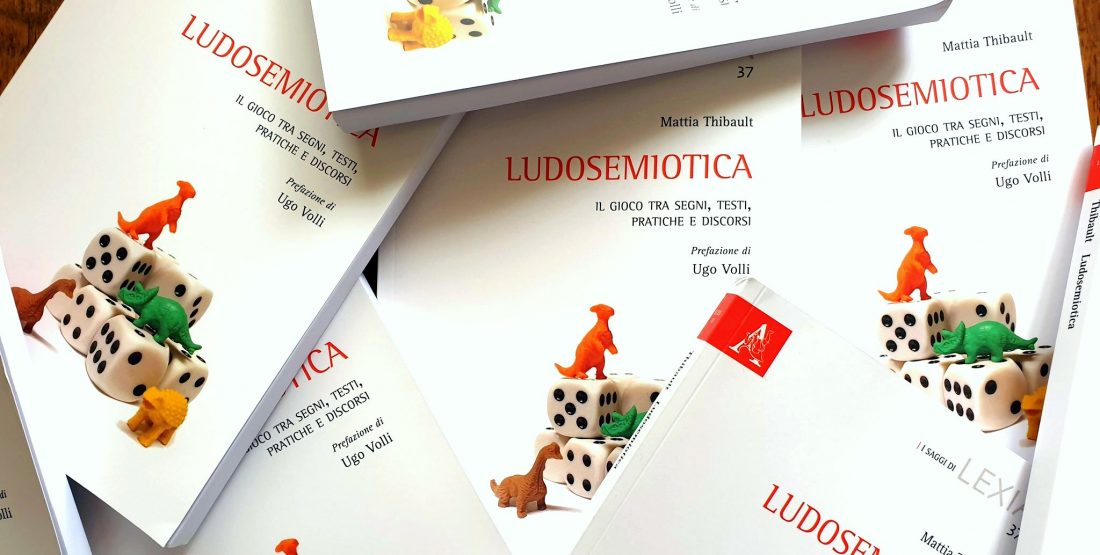
New Book: Ludosemiotica
We all know what “play” is, or at least we think we do. But, in fact, how does this indispensable cultural device really work?
What does it mean “to play”? And what interpretative and communicative operations does it involve? Today, while our culture appears to be the subject of a progressive ludicisation (testified by the flourishing of the digital game industry and the sucees of paradigms such as those of gamification and game-based learning) these questions appear more pressing than ever.
GG member Mattia Thibault tries to answer these and similar questions in his first book, Ludosemiotica (2020, I Saggi di Lexia, Aracne, 236 pages, in Italian), and it does so by adopting a specific point of view: that of semiotics. By investigating play and games in their various facets (regulated or free, solitary or in a group) and in their various incarnations (toys, digital games, board and role-playing games, etc.), this work aims to lay the foundations for a “ludosemiotics”, a theory of play based on its ability to create, modify and convey meaning.
Ludosemiotica delves into the microscopic functioning of play with curiosity (starting from the individual institution of a sign function that arise from the use of a toy) and tries to describe its inner workings and the interpretative dynamics and strategies that play requires. From the fulcrum of the playful mechanism, then, all the planes of immanence are gradually investigated, up to the position of play in the semiosphere and its role within Western culture. In other words, this book pursues the desire, simple but ambitious, to use semiotics to understand (better) play.
Reference: Thibault, M. (2020) Ludosemiotica. Il gioco tra segni, testi, pratiche e discorsi, Rome: Aracne. 236 Pages. ISBN: 978-88-255-3212-8.
See the publisher page: Aracne Editrice




Sorry, the comment form is closed at this time.